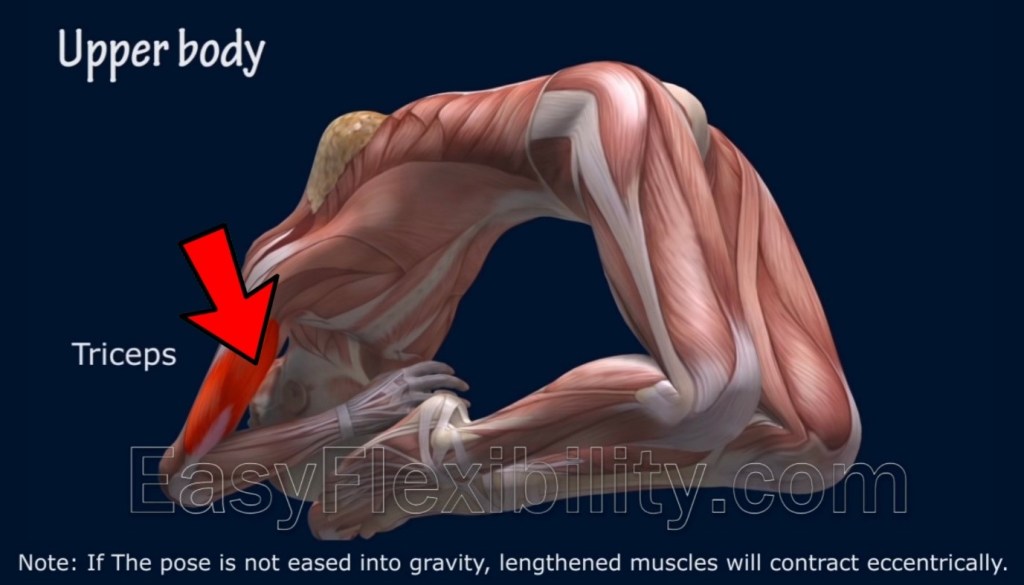Kapotasana is derived from two words, ‘Kapota’ mean ‘Pigeon’ and ‘Asana’ means ‘Pose’. ‘Kapotasana’ (Pigeon Pose Muscle) is a back bending pose resembling Chakrasana or Wheel Pose.
In some styles of Yoga, it’s called the King Pigeon or Pigeon Pose. Performed correctly, this Pigeon Pose Muscle a large number of muscles throughout the body, especially of the hips, thighs and chest. Unlike similar postures such as the Bridge or Wheel (Urdhva Dhanurasana) which works against gravity, the back bridge allows the gravity to assist the pose.
Traditionally Kapotasana is believed to be ideal for the female reproductive system and is recommended for women who are trying to conceive.
Beyond therapeutic and yogic applications, deep back bends allow for easier and more effective performance of skills involving stretching back. Martial arts, yoga, dance, figure skating and other disciplines can benefit from mastering this Pigeon Pose Muscle, if target skills involve back bending.
There are many muscles that are being stretched in this pose as well as muscles that are being contracted to assist the pose. Let’s study them one by one.
Lower Body Muscles Lengthening
Rectus Femoris:

Rectus Femoris flexes the hip joint specially when the knee is flexed but in the Pigeon Pose, the hip is hyperextended and thus, Rectus Femoris is stretched.
Psoas:

Psoas muscles are also the flexors of the thigh at the hip joint and this is why they are also being stretched in executing this pose.
Iliacus:

Iliacus works with Psoas muscles in the flexion of the hip joint and this is why, they are being stretched.
Pectineus:

Pectineus is a flexor and adductor of the leg at the hip joint. So, just like other flexors it will also be flexed.
Upper Body Muscles Lengthening
Rhomboids:

Rhomboids retract, elevate and rotate scapula. During the execution of Pigeon Pose Rhomboids get lengthened.
Pectoralis Minor:

Pectoralis Minor draws the scapula down and medially and gets stretched during the Pigeon Pose.
Pectoralis Major (Sternal):

Pectoralis Major is a medial rotator as well as a flexor of the arm at shoulder joint. While executing Kapotasana, lateral rotation occurs in the humerus and that’s why sternal head of Pectoralis Major is getting stretched.
Latissimus Dorsi:

Another medial rotator as well as extensor of the arm at shoulder joint. Both of these movements are opposite to the movements occurring during the execution of the Pigeon Pose.
Subscapularis:

Subscapularis is also a medial rotator of the arm. Hence, gets lengthened.
Triceps:

Triceps extend the forearm at the elbow joint, but during Kapotasana the forearm is bent so Triceps get stretched.
Core Muscles Lengthening
Rectus Abdominis:

Rectus Abdominis helps the trunk to flex but here as you can see, the trunk is being extended so Rectus Abdominis is stretching.
External Oblique:

External Oblique also helps in flexing the trunk and so gets stretched during the Pigeon Pose.
Internal Oblique:

Another flexor of the core that will be stretched during Kapotasana’s execution.
Psoas Minor:

Psoas Minor, apart from being a flexor of the thigh, is also a weak flexor of the trunk. The extension of the trunk as a result of Kapotasana will stretch it as well.
Cervical Flexors:

The neck will be extended back during the Pigeon Pose so the Cervical Flexors get stretched.
Lower Body Muscles Contracting
Gluteus Maximus:

Gluteus Maximus extends the thigh backwards as seen in the picture. Thus, it will be contracting.
Hamstrings:

Hamstrings are prime extensors of the thigh and flexors of the knee. This is why they play a major role during the execution of the Pigeon Pose.
Adductor Magnus (Ischial Fibers):

Ischial Fibers of the Adductor Magnus act as Hamstrings and extend the leg.
Upper Body Muscles Contracting
Posterior Deltoid:

Posterior Deltoid extends, externally rotates and horizontally abducts the arm. Its contraction will play a big role in perfect execution of the pose.
Teres Minor:

This rotator cuff muscle helps in externally rotating the arm.
Infraspinatus Pigeon Pose Muscle Anatomy:

It is the main external rotator of the shoulder joint, this is why it is getting contracted during Kapotasana.
Serratus Anterior Pigeon Pose Muscle Anatomy:

Serratus Anterior protracts and rotates the scapula upwards. Its cobtraction is important in position the arms like in the picture.
Trapezius Pigeon Pose Muscle Anatomy:

Rotates, elevates and retracts scapula as well as extends the neck. Mostly, it will be contracting during the execution of the Pigeon Pose.
Read more Go to: https://easyflexibilityblog.com/2021/10/25/side-splits-anatomy/
Core Muscles Contracting
Spinal Extensors:

Spinal Extensors will extend the spine and help in the execution of Kapotasana.
Thousands of people worldwide have achieved the same results you’re dreaming about and you can too! Ready to get started? Click on the Picture Below:


